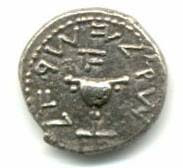I went to DCT this morning and did a pre-flight on an old friend, N1689H, the same plane I did most of my Private Pilot training flying in when I was at DCT.
It's had a few upgrades - electronic and magneto ignition and a push start rather than a key which was interesting.
Downside, the left seat now tends to not lock into place where I want it, it feels locked in place, pushing on it it doesn't move, but it then drops back one setting in flight and then locks into place which is rather disconcerting. That needs to get fixed.
So I met Kevin who would be my IFR instructor at the plane and we got set to go. Very nice guy and quite knowledgeable and we seem to work well together so far.
I brought along a pair of Blockalls view limiting devices (or foggles as they're called), recommended by Mr. B and they did indeed come in handy.
We took off, working as we did on instrument takeoff procedures, and then headed to the practice area. As we went there I put the foggles on. The Blockalls are comfortable and work really well at blocking the horizon yet let you see the instruments.
We then started doing instrument scans while doing maneuvers - standard rate turns, standard rate turns with descents, standard rate turns with climbs, cruise configuration, and more standard rate turns and then timed turns, descents, climbs etc. Quite the workout and was a lot of fun, and its easy to see how you can get quickly task-loaded.
The we added tuning in and identifying the Flint Vortac all the while doing standard rate turns, and then flying to and from it. Yep, more task loading.
Then Kevin failed (covered up) a bunch of instruments which tends to concentrate one's scan quite wonderfully.
Overall I was doing pretty well at the scan and controlling the aircraft, still have a lot to work on to make it precise, and it was a whole new and pretty intense experience. Kevin thought I was doing very well for a first IFR lesson - some of that is due to studying the ground materials ahead of time and due to the advice I've already received from Mr. B.
Lots of fun.
Then we did an own-navigation RNAV GPS approach to Pontiac's Runway 27L. Kevin had me take the foggles off for that and showed me how we setup the Garmin 430 for it, but my time was heavily looking inside the cockpit anyways to concentrate on the turns and GPS LPV approach. I made it right down the glidepath to minimums and did a very nice landing. Very neat to actually do an approach after spending this time reading and watching training videos about it. I still have a lot to master and understand before I'd try it myself right now, but its rather impressive how the system works and how it can get you right to the runway.
We then did one hop around the pattern, doing a soft field takeoff as requested by Kevin and I did it perfectly which was very cool as I haven't practiced one of those for awhile. Then down with a soft field landing on 27R and back to DCT.
I can already see how Instrument training is going to make me a much more precise and capable pilot. It's also great that there is a clear syllabus, a clear lesson plan, and a debrief after the flight - all of which will enhance learning.
I had the controls the whole time except for putting the foggles on and off and for the brief moment when the seat slipped, so I was PIC.
That's 2.1, 1.5 simulated instrument, and 2 great landings. So it begins.


2 comments:
Different, isn't it?
Wait until you do your first REAL IFR approach...and break out and see the runway right where it is supposed to be.
Learn to use your autopilot to keep your task loading to a minimum. "George" is your friend.
B: That it is. I[m looking forward to knowing and being skilled enough to try it for real. I also need to really master the autopilot too, good tip.
Post a Comment